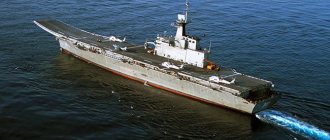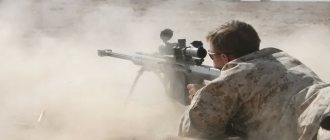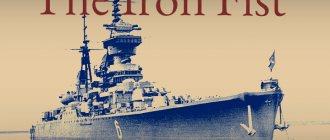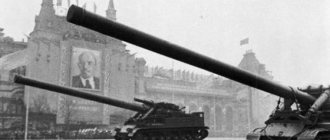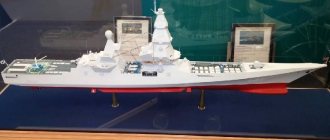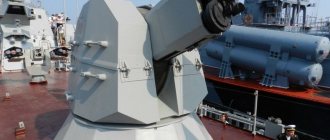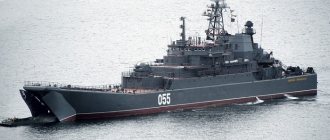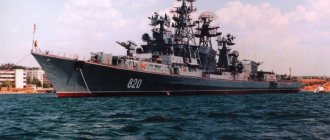“The biggest and most useless thing in the world” is the Japanese superbattleship Yamato. Displacement - 72 thousand tons The navy has always been not only an effective instrument of warfare at sea, but also a kind of “exhibition of achievements.” Not every state can afford to build large and well-armed ships. Their very presence, albeit in small quantities, is already a kind of application for the title of great power. Quite often, the efforts spent on creating sea giants ultimately did not justify themselves, however, huge warships in any case remained in history, if not as winners, then at least as material evidence of the passage of the next stage in the development of civilization.
USS Nimitz CVN-68
The largest warship in the world 2021 is called the Nimitz and it belongs to the Americans, representing an aircraft carrier. His nickname "Sea Wolf" is a sight to behold. Today she is assigned to Port Kitsap. The ship was laid down in 1968, after which it was launched for the first time in 1972, and a couple of years later it was put into service. In order to set it in motion, nuclear reactors and steam turbines are used, developing a power of 260 thousand horses. Thanks to them, a large warship is able to reach speeds of up to 31.5 knots. The crew can include up to 3,200 people, and the air wing can accommodate 2,480 people. Nimitz Square can accommodate up to 90 aircraft. Other US warships cannot compare with it.
- Country: USA
- Type: Aircraft carrier
- Displacement: 98425 t
- Length: 332.8 m
- Width: 76.8 m
- Equipment capacity: 90 units
- Speed: 31.5 knots
Enterprise
The aircraft carrier Enterprise is one of the largest combat ships in the world.
Its length is 342 m. According to the project, 5 more aircraft carriers of this type were planned. But due to the large financial costs that went into the first ship, the project was suspended. The ship was in service with the US Navy from 1961 to 2012. The ship's ammunition reached two and a half thousand tons. The area of the giant ship was capable of accommodating 90 helicopters and airplanes on its site, as well as up to 5,000 crew members. The warship took part in many military conflicts and went to sea twenty-five times. Currently, work is underway to dismantle the aircraft carrier. It will be replaced by the aircraft carrier Gerald R. Ford, whose length will be 337 m. Its construction was completed in 2013. Commissioning is planned for 2016. https://www.youtube.com/watch?v=0YmolLC0i3c
34 7
Admiral of the Fleet of the Soviet Union Kuznetsov
What name did they give to the Soviet cruiser under code project 1143.5? Today she is the largest warship in the world 2022 and thereby glorifies her homeland. As soon as they called him, he was “Riga”, “Leonid Brezhnev”, but today’s name is well known to everyone. The USSR aircraft carrier was launched in 1985, and five years later it appropriated the name of Admiral Kuznetsov. It was created at the Black Sea plant. First of all, the largest warship in Russia is designed to destroy large targets over water, and also protect sea borders from attacks from enemies. Its area is designed for servicing and basing helicopters and aircraft in a total of 52 units. "Admiral Kuznetsov" is currently the only large warship that can be located on the Black Sea in the status of an aircraft carrier.
- Country Russia
- Type: Aircraft carrier
- Displacement: 61390 t
- Length: 306.45 m
- Width: 71.96 m
- Equipment capacity: 52 units
- Speed: 29 knots
Destroyer Daring
Experts recognize the British Type 45 Daring class destroyer as the most advanced warship.
These warships perform missions to provide air defense to naval groups in their area of operation. Modern electronic systems effectively coordinate aviation actions along the coastline. The cruising range of the destroyer Daring is more than 5,000 nautical miles. This allows it to be a platform for coordinating air defense almost anywhere on the planet.
The first ship was put into operation in 2006. Displacement 8100 tons. The length of the vessel is 152 meters. Cruising speed over 29 knots. Crew of about 200 people.
Vikramaditya
In 2008, the largest warship in the world in India, which is one of the three world leaders. With his appearance, he replaced the then-operating “Viraat”, which had already exhausted its entire resource. The Indian state sent the order to the Black Sea Shipyard, where it underwent modernization and returned to the Navy of its state again in 2013. Despite the fact that the large warship has large dimensions, it does not accommodate much aircraft on board. Its crew can include no more than 1,600 people, and the power of each of the 4 engines reaches 50 thousand horsepower.
- Country: India
- Type: Aircraft carrier
- Displacement: 45500 t
- Length: 274 m
- Width: 53.2 m
- Equipment capacity: 26 units
- Speed: 32 knots
Ticonderoga class guided missile cruiser:
The Ticonderoga class guided missile cruisers were the first American ships to be equipped with the SPY-1 radar, SM-2 anti-aircraft missiles and the Aegis combat system. Although cruisers are considered multi-purpose ships capable of fighting against submarines and surface ships, their main task is to protect US aircraft carriers and other large and expensive objects from massive air attack.
Ticonderoga- class ships have one of the largest missile magazines in the world. SM-2 and SM-6 air defense missiles SM-3 ballistic missile interceptors SeaSparrow short-range air defense missiles Tomahawk multi-role subsonic cruise missiles, or ASROC . The ships are also capable of carrying the new long-range anti-ship missile, new anti-ship versions of the Tomahawk and the Harpoon .
Ticonderoga -class cruisers still in service (five older ships were scrapped at the end of the Cold War) are 170 meters long and weigh up to ten thousand tons when fully loaded. Each can produce more than thirty knots, thanks to four General Electric LM-2500 gas turbine engines.
the Ticonderoga class particularly powerful: the ability of some ships of the class to carry out a ballistic missile defense mission using Aegis and SM - 3 , and the ability to employ F - 35 and E - 2D Hawkeye early warning aircraft as an extension of the ship's air defenses. - a system known as NIFC-CA .
"Merlin"
Under the aircraft-carrying cruisers of Project 1143 lies a whole series of the USSR fleet, which belong to the heavy category and are intended for the far zone, even the ocean. The largest warship in the world was manufactured in Nikolaev of the former Soviet Union. A total of 4 vessels were launched under this project. The bow contains weapons, and the crew can accommodate no more than 1,300 people. The aircraft carrier is capable of sailing without refueling for up to 45 days. A boiler-turbine unit with a capacity of up to 180 thousand horsepower is responsible for the propulsion. The largest warship in Russia can accommodate up to 40 air force units.
- Country Russia
- Type: Aircraft carrier
- Displacement: 37,000 t
- Length: 273 m
- Width: 51 m
- Equipment capacity: 40 units
- Speed: 30 knots
"USS Enterprise"
Aircraft carrier carrying aircraft with nuclear weapons "USS Enterprise".
The world's first ship to carry nuclear-armed aircraft, the Enterprise (342 m long) was the longest and perhaps also the most famous warship in history. She remained in service for 51 consecutive years, longer than any other American warship, and was used in numerous battles and wars, including the Cuban Crisis, Vietnam War, Korean War, etc.
Source
"Clemenceau" R 98
In France, the largest warship in the world is the Clemenceau, which is an aircraft carrier. Its main task is to support the actions of the entire fleet and even airborne assault. The vessel, light in its class, is equipped with a deck to accommodate aircraft. Maximum aircraft or helicopters with a mass of no more than 18 tons can land here. No other French warship can boast of its importance in the navy. It was first launched in 1957, and put into service in 1961. Assigned to the port of Brest.
- Country: France
- Type: Aircraft carrier
- Displacement: 32800 t
- Length: 265 m
- Width: 51.2 m
- Equipment capacity: 40 units
- Speed: 32 knots
"Akagi"
Aircraft carrier "Akagi".
Akagi is an aircraft carrier that was built for the Imperial Japanese Navy. She was in service from 1927 to 1942 and took part in the attack on Pearl Harbor in December 1941. Then the Akagi was heavily damaged during the Battle of Midway in June 1942 and was then deliberately scuttled. The length of the ship was 261.2 m.
Charles de Gaulle
The main thing in importance for the French navy is this active aircraft carrier, which became the first surface aircraft with a nuclear power plant in this country. It gradually replaced its predecessor, Clemenceau, and will soon remain the only one that can actually be seen. French warships are currently going through hard times; there are fewer and fewer of them. The ship is assigned to the port of Toulon, and was first launched in 1994. The Navy accepted the aircraft carrier into service in 2001. The crew can consist of a maximum of 1,900 people, and the hangar can accommodate 40 aircraft. largest warship in the world a navigation autonomy of up to 45 days. The only fighters placed on deck can only be Rafael M, and SA-365 helicopters.
- Country: France
- Type: Aircraft carrier
- Displacement: 42000 t
- Length: 261.5 m
- Width: 64.36 m
- Equipment capacity: 40 units
- Speed: 27 knots
Clemenceau
French Clemenceau were considered among the most powerful warships in France. Two such ships were built: Clemenceau and Foch. The first was withdrawn from service with the French Navy, and the second was sold to Brazil at the beginning of this century. Now the ship is called "São Paulo" and is in service with the Brazilian fleet. The aircraft carrier is capable of accommodating 39 aircraft on deck. Its length is 265 m. The ship can accommodate more than 1,300 crew members.
Ships "America"
Breaking all traditions, a landing ship of universal importance, built in the USA, appears on this site. There are 2 of these units in total, but another one is under construction. The largest warship of this type in the world accommodates a large number of aircraft and surface vessels on board. Typically, its hangar houses landing craft, American helicopters, airplanes and even fighter jets. US warships called "America" are the pride of the army.
- Country: USA
- Type: Airborne
- Displacement: 45700 t
- Length: 257.3 m
- Width: 32.3 m
- Equipment capacity: 30 units
- Speed: 22 knots
Wasp-class universal landing ships
- Country: USA
- length: 257.30 m
- width: 42.67 m
- displacement: 40,532 tons (full)
- crew: 1147 crew + troops
Until the advent of “America”, ships of the “Wasp” type had no competitors in their size among UDCs. They were created specifically to ensure transportation by sea and landing on an unequipped coast of an expeditionary marine battalion, the number of which could reach almost 1,900 people. The paratroopers can be supported by AV-8B Harrier II vertical take-off and landing combat aircraft (their number can reach 20). The Marines also have AH-1W Super Cobra attack helicopters at their disposal. At the rear of the Wasp there is a large room where equipment used for landing operations can be located. In total, the American fleet received eight such ships.
UDC type "Wasp" / ©Topwar
"Orlan"
Nuclear-powered missile cruisers of this type were built according to Project 1144 and entered service in 1979. To this day they are in the Navy and serving. The largest warship in Russia with missile control was constructed at the Baltic Shipyard. There are 1,600 rooms inside the ship, among which naturally there are cabins for the crew. The crew can accommodate up to 760 people who form the team. The aviation group includes only 3 Ka series helicopters. The weapons include anti-submarine installations, mine-torpedoes, missiles, and even anti-aircraft artillery.
- Country Russia
- Type: cruiser
- Displacement: 25860 t
- Length: 250.1 m
- Width: 28.5 m
- Equipment capacity: 3 units
- Speed: 32 knots
(Visited 428 times, 1 visits today)
Yamato
Battleship Yamato.
The Yamato-class battleships were built for the Imperial Japanese Navy and served during World War II. With a displacement of 73,000 tons, they were the heaviest battleships in history. The length of such a ship was 263 m. Although it was originally planned to build 5 Yamato-class ships, only 3 were completed.
Frigates
As the fleet developed, some types of warships appeared, others disappeared, and still others acquired a different meaning. An example would be a frigate. This concept survived later types such as ironclads, dreadnoughts and even battleships. True, a modern frigate roughly corresponds to the Soviet concept of a large anti-submarine ship, but it sounds shorter and somehow more beautiful. In its original sense, it means a three-masted ship with one artillery deck for 20-30 guns. Beginning in the 17th century, the adjective “Dunkirk” was added to the word “frigate” for a long time, meaning its predominant use in a separate zone of the naval theater of operations adjacent to the Pas-de-Calais. This type was distinguished by its speed. Then, as the range of autonomy increased, they began to be called simply frigates. The displacement is average for that time, approximately 800-1000 tons. The most famous Russian frigate was called “Pallada”; in 1855, a glorious expedition to the shores of East Asia was undertaken on it under the command of Admiral E.V. Putyatin.
Schooners
There are types of large ships that have become “workhorses”, designed to transport a wide variety of cargo. Schooners occupy a special place among them. These are multi-masted vessels, distinguished by the fact that at least two of their rigs are oblique. They are topsail, staysail, Bermuda or gaff, depending on which masts are equipped with oblique sails. It should be taken into account that the line between a two-masted topsail or topsail schooner and a brigantine is very arbitrary. This type has been known since the 17th century. It reached its greatest popularity in the American merchant fleet, in particular Wolf Larsen, the character of Jack London, and his crew hunt fur seals on a schooner. Compared to it, other types of ships are more difficult to control (According to J. London, this process is accessible even to a lone sailor). Most often, schooners were two- and three-masted, but there are cases when the equipment was much more numerous. A kind of record was set in 1902, when a ship with seven masts (Thomas Double Lawson, Quincy Shipyard) was launched.
Bismarck-class battleship (Germany)
After the end of the First World War, shipbuilders in Germany were reluctant to build large warships for a long time. However, the situation changed dramatically when Hitler came to power. Initially, “Bismarck” was focused on acting alone, but soon the project was changed in the direction of strengthening the vessel.
Brigantine raises sails
In fact, the same barques, but with two masts, are called brigantines. All types of ships differ in their purpose and navigability. Brigantines stand out for their speed and lightness. The sailing rig is mixed, with straight sails on the foresail (front mast) and oblique sails on the mainsail. Favorite ship of pirates of all seas. Historical sources mention brigantines with the so-called “Bermuda mainsail”, that is, a triangular sail stretched between the luff line and the luff, but none of the surviving representatives of the species can boast of it. However, these nuances are of interest only to specialists.
Aircraft carrier "Victory"
Her Majesty's Ship Victoria, 1960
Aircraft carriers generally do not shine with grace. It's all "Sir, this looks like a shoebox" and "OMG, my husband is in charge of a floating garage." But we love aircraft carriers, and if we look for beauty in them, then in this ship. Initially, Victories is a very proportional representative of its class. Successful modernization in the 1950s allowed the aircraft carrier to outlive many of its peers. Here it is, Her Majesty's ship "Victorious", flying somewhere about its business (in fact, undergoing tests) at full speed, raising a breaker and throwing a heavy breaker wave kilometers to the side. The Type 984's hefty 3D radar barrel rotates in search of targets, and the forward part of the flight deck is occupied by Sea Vixens - fighters as awkward as they are cute.
Caravels
“She passed like a caravel...” is sung in a famous pop song. It doesn't hurt to study the types of sailing ships before composing lyrics for future hits. The compliment turned out to be somewhat ambiguous. Not every girl wants to be compared to a lifting, large and rather heavy vessel. In addition, the caravel’s nose is raised high, which can also be seen as an undesirable hint.
However, in general this type certainly has good seaworthiness. It is most famous for the fact that Columbus made his expedition to the shores of the New World on three caravels (“Santa Maria”, “Pinta” and “Nina”). Externally, they can be distinguished by the mentioned raised tanks (bow superstructures), as well as by sailing equipment. There are three masts, a foresail with straight sails, and the rest with lateen (oblique) sails.
Purpose: long-distance sea and transoceanic voyages.
The Russian word “ship” is morphologically derived from the word “caravel”. It gave its name to the famous French passenger airliner, which was very beautiful.
